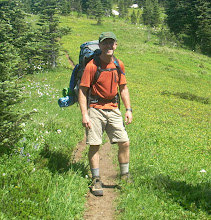The American Podiatric Medical Association recently released a position statement on barefoot running.
APMA Position Statement on Barefoot Running
Barefoot running has become an increasing trend, and a possible alternative or training adjunct to running with shoes. While anecdotal evidence and testimonials proliferate on the Internet and in the media about the possible health benefits of barefoot running, research has not yet adequately shed light on the immediate and long term effects of this practice.
Barefoot running has been touted as improving strength and balance, while promoting a more natural running style. However, risks of barefoot running include a lack of protection--which may lead to injuries such as puncture wounds--and increased stress on the lower extremities. Currently, inconclusive scientific research has been conducted regarding the benefits and/or risks of barefoot running.
The American Podiatric Medical Association, along with the American Academy of Podiatric Sports Medicine, encourages the public to consult a podiatrist with a strong background in sports medicine to make an informed decision on all aspects of their running and training programs.
It's funny how they mention the lack of research on the immediate and long term effects of barefoot running when you consider that the majority of the world's population do not wear shoes. Or that humans have been wearing minimal or no footwear since the dawn of our species.
Injuries such as puncture wounds are feasible, but that's what your eyes are for. I can't tell you how many people ask me what I do about glass. I go around it. I have no idea how APMA comes up with increased stress on the lower extremities, there being a lack of research and all. Maybe they're referring to that anecdotal evidence that proliferates on the Internet.
Speaking of research, I did find this study, with the following reason for being:
The purpose of this study was to present a systematic overview of published reports on the incidence and associated potential risk factors of lower extremity running injuries in long distance runners.
And they found:
The overall incidence of lower extremity injuries found in the 17 studies varied from 19.4% to 79.3%. In other studies in which non-lower-extremity injuries were also described and included in the overall incidence number, the reported incidence for injuries varied from 26.0% to 92.4%. The predominant site of lower extremity injuries was the knee, for which the location specific incidence ranged from 7.2% to 50.0%. Injuries of the lower leg (shin, Achilles tendon, calf, and heel), foot (also toes), and upper leg (hamstring, thigh, and quadriceps) were common, ranging from 9.0% to 32.2%, 5.7% to 39.3%, and 3.4% to 38.1%, respectively. Less common sites of lower extremity injuries were the ankle and the hip/pelvis (also groin), ranging from 3.9% to 16.6% and 3.3% to 11.5%, respectively.
That's not exactly anecdotal evidence. Since the vast majority of long distance runners wear shoes and a good number of them suffer from lower extremity injuries, you would think the APMA would have a position statement on that as well, eh? Or perhaps the American Academy of Podiatric Sports Medicine could list the injury rate for the running shoes they recommend.
With or without shoes, I think you'll suffer fewer lower extremity injuries if you learn to run properly. Now the only basis I have for that statement are my experiences this year, especially over the last two months. Running barefoot provided the impetus for me to relearn how to run. I'm more in tune with my body. I'm more efficient. I'm even a little faster. But most of all, running is now fun.
Addendum:
If you're trying to research running and foot-related terms, be careful that you spell them correctly in the search engine or you may be doing some fast explaining if someone walks up at the perfect uncomfortable moment. Take "pronation" for example. Accidentally swap two letters....
Last Friday, while on a three mile barefoot jaunt during lunch, I crossed paths with a woman whom I've often seen running. "Does everybody think you're crazy?" she asked. "Yeah," I answered.
River Kwai and Elephants
5 weeks ago

3 comments:
Great post, Hank. You're actually starting to brainwash me into thinking maybe you're not all that crazy.
And I love this (I'm a sucker for common sense, I guess):
"Injuries such as puncture wounds are feasible, but that's what your eyes are for. I can't tell you how many people ask me what I do about glass. I go around it.
You are absolutely right, people have been running barefoot for a super long time. And when folks say that we are not made for running on the new, harder man-made surfaces, they obviously haven't paid attention to the rocky and baked-clay surfaces that many of the barefoot runners go across without trouble. It's just a complete paradigm shift, so it will take awhile for folks to get it. Glad you are giving it a try and it's going well for you. I have been doing the same. You might find the 12 Step Program to Run Shodless I put together helpful. Would love to know what you think of it. It's on my blog, Running Quest (link: http://bit.ly/eGgHm).
All the best!
Clynton
Running Quest
Pat, thanks for the vote for sanity.
Clynton, thanks for the post. From what I went through I think the 1-2 mile "steps" take a little longer. Part of learning to do it right involved doing it wrong. It takes some time to recover from that monster blister, especially after the dead skin wears off and exposes the tender stuff. :-)
Post a Comment